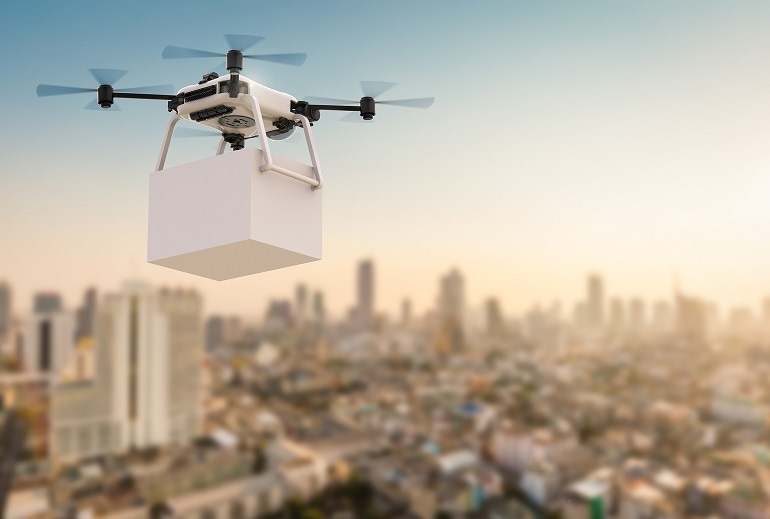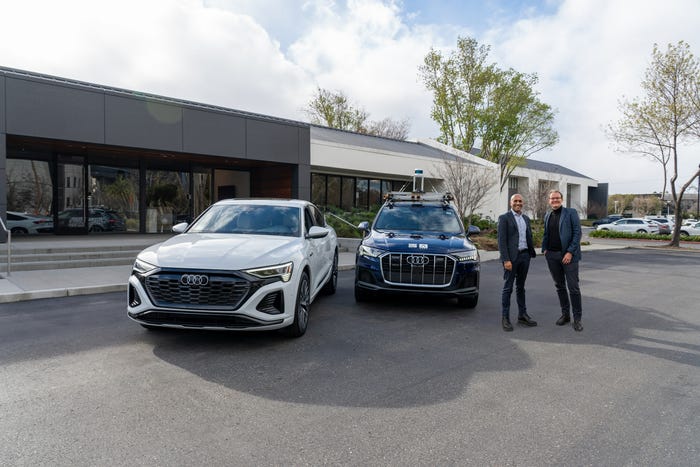Micro-weather data may soon become a reality—and a necessity for future fleets of delivery drones.
June 22, 2017

Imagine a weather report so precise it provides wind-gust forecasts for individual city blocks. Such micro-weather data may soon become a reality—and a necessity for future fleets of delivery drones.
As Amazon.com Inc., United Parcel Service Inc., Domino’s Pizza Inc., and others gear up to launch autonomous drone deliveries of books, pills, and pizza, companies are realizing it’s the quality of hyperlocal weather data more than anything else that will steer their packages around storm clouds and through wind-buffeted urban canyons.
“The weather issue is a very significant one,” said Sean Cassidy, director of safety and regulatory affairs for Amazon’s drone unit. “We don’t have anything at the level of granularity that you would need to operate.”
The push is on to develop traffic-management systems that will forecast weather conditions down to a single city block, and at elevations as low as 400 feet. That promises to clear the way for the holy grail of drone service: automatic flights that make their rounds without pilots controlling them from the ground as they do now.
And it’s becoming clear that delivery drones themselves will play an increasingly important role in collecting weather conditions on their journeys through the sky, relaying that information to computer weather models and perhaps back to fleets of drones following behind.
Aviation weather reports are currently designed to cover mostly areas around airports, as well as the high altitudes where airplanes tend to fly . That’s why existing systems are so ill-equipped to help guide the thousands of small drone craft that are envisioned taking off and landing from diverse locales.
Weather reports for drones will rely on multilayered systems of ground-based weather gauges, sensors on the drones themselves, and data from national weather services, all feeding computer models, said Marcus Johnson, a research aerospace engineer at the NASA Ames Research Center at Moffett Field, California. “It’s not an easy solution,” he said.
Nor will such technology come cheap. An instrument that records six variables such as wind speed, wind direction, and humidity costs about $2,500, according to sensor manufacturers. That doesn’t include installation, maintenance, and sending the data the sensors collect over the internet.
Meteorologists dream of having sensors cover every square mile drones fly over, but doing so could be prohibitively expensive, said Jon Tarleton, chief of weather marketing in the Americas for Finland’s Vaisala, which manufactures most of the sensors used by the Federal Aviation Administration at airports.
“The problem is solvable in almost all cases. It just comes down to cost,” said Tarleton, whose company makes the weather balloons the National Weather Service sets loose each day to compile the national forecast.
Urban areas present some of the greatest challenges. Tall buildings create channels of wind that can clash and swirl into tight eddies, said Matthias Steiner, deputy director for the National Center for Atmospheric Research’s Aviation Applications Program. Sun-baked sidewalks opposite shaded ones just across a street can produce uneven heat waves, causing unpredictable downdrafts and updrafts. Weather patterns in cities on coastlines or at the foot of mountains can also wreak havoc.
Autonomous drones, moreover, will have to expend more of their precious power to stay aloft in extreme temperatures, and to stay on course when buffeted by winds. That can prevent a drone from making it back to its home base, Steiner said.
“More and more people are starting to realize that weather is an important element that you need to factor in, because these smaller craft are so much more sensitive to weather than the larger aircraft,” said Steiner, who organized the first meeting with weather experts and drone participants at a Dallas conference last month, creating a buzz in the industry.
BNSF Railway Co.—the only company in the U.S. flying drones long distances, a project it’s undertaken as part of an FAA study—has called back flights or kept them grounded because of the elements, said Todd Graetz, director of BNSF’s drone program. The railroad has a big advantage over other companies looking to begin operating drones: Sensors placed along its tracks provide trains with information on high winds and heavy rain that BNSF drone operators can tap into.
Halfway around the world in Rwanda, a company called Zipline has been using fixed-wing drones to deliver blood supplies to rural hospitals since October. The effort is generally a success so far, but weather has been a major obstacle—especially in mountainous regions. Zipline is working with researchers to build models so it can run scenarios for its drones under different conditions.
The more climate data, the better, said Zipline co-founder Keenan Wyrobek. “It’s really about making your systems have margin for the craziest wind-and-gust conditions, and making sure that doesn’t throw you into a hill or someone’s house.”
About the Author(s)
You May Also Like
.png?width=700&auto=webp&quality=80&disable=upscale)
.png?width=700&auto=webp&quality=80&disable=upscale)

.png?width=300&auto=webp&quality=80&disable=upscale)
.png?width=300&auto=webp&quality=80&disable=upscale)
.png?width=300&auto=webp&quality=80&disable=upscale)
